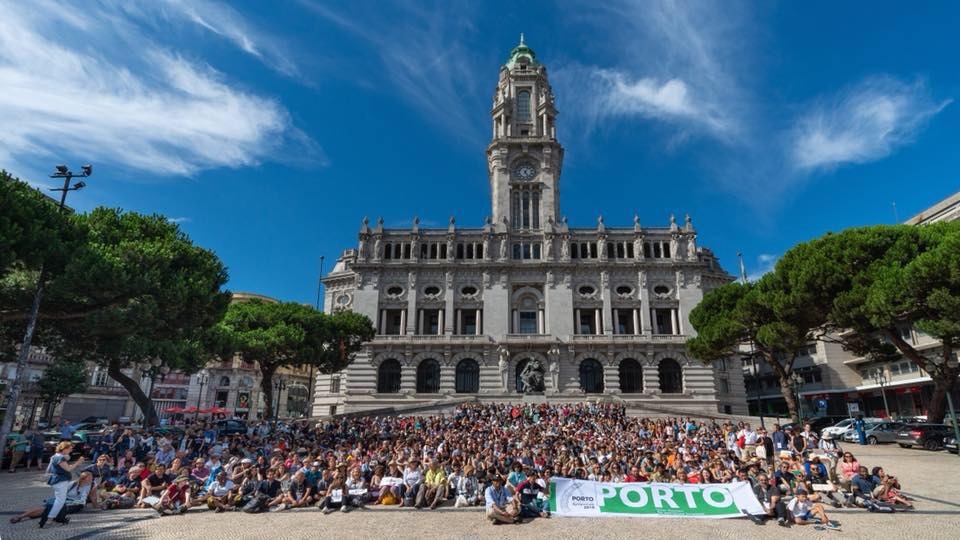
Goup pictures: Marc Van Liefferinge.
This symposium was a great success: more then 800 sketchers of 46 different countries attended!
Let’s build bridges with our drawings, instead of walls. Here we felt so good that drawing is a universal language 🙂
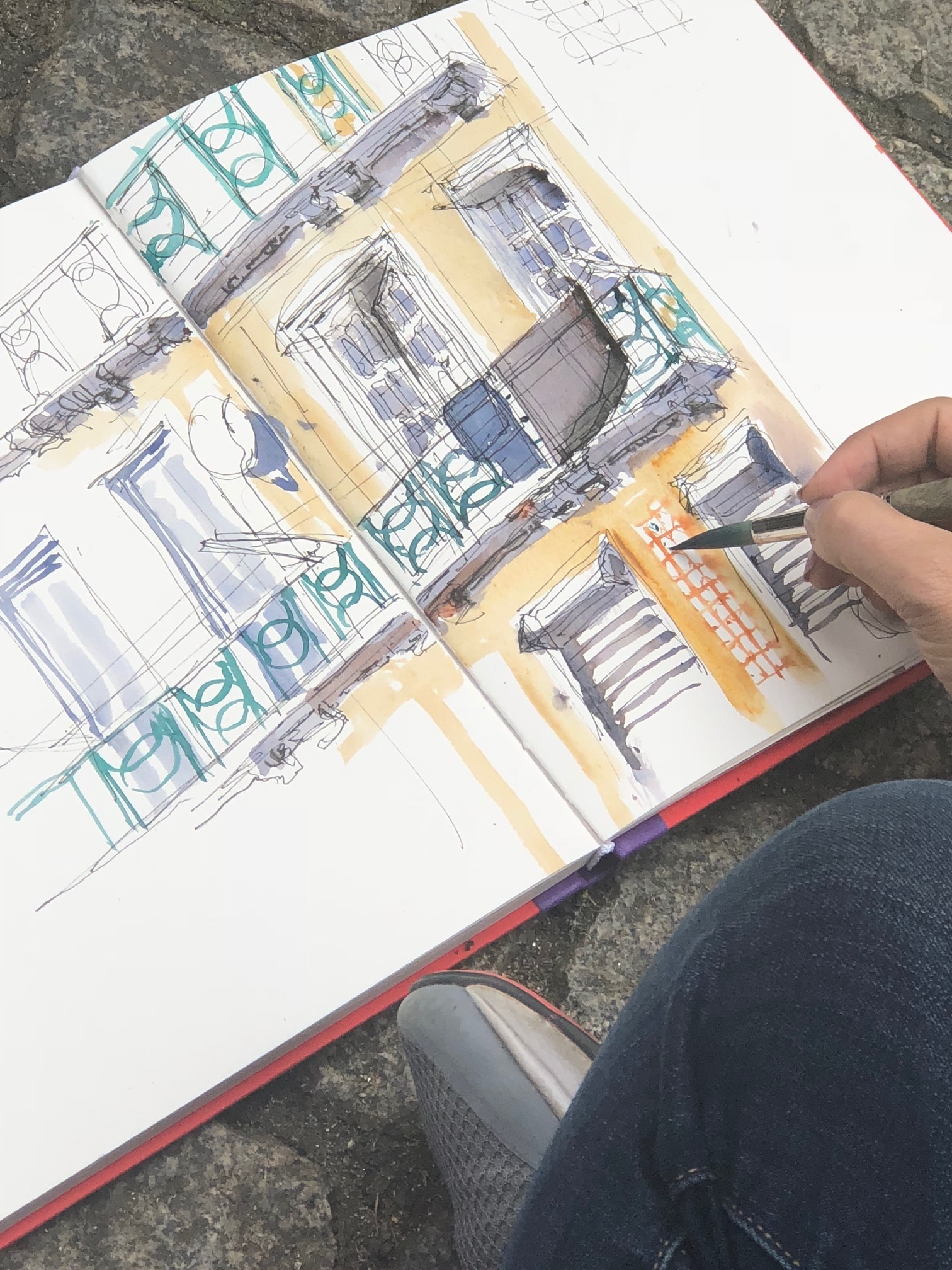
Reham Ali’s workshop by Barbara Luel
To warm up, I started with Reham Ali’s workshop. It was a wonderful experience: She teaches how to build your drawing by drawing first all the vertical lines. This was very helpful. I felt a lot of resistance by doing this, but finally it helped to build my drawing more or less correctly. She was drawing everything immediately in ink, and didn’t mind the mistakes. Mistakes are your babies: you should LOVE them! A remark about the subject: chose something with life in it, even with some uglyness: a balcony full of laundrie and clutter. Clutter means human activity and is more interesting then something neat and beautiful. When the drawing is finished she starts the watercolour by first painting the shadows. The shadows give life to your painting. After that you can paint the rest. And also important: don’t forget to add big splashes with a big brush with natural hair. Don’t use a synthetic brush if you want beautiful natural splashes 😉
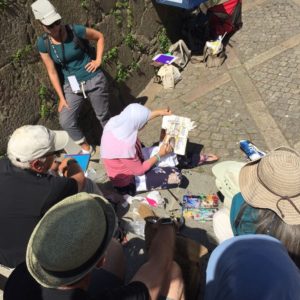
Photo by Nathalie Renotte
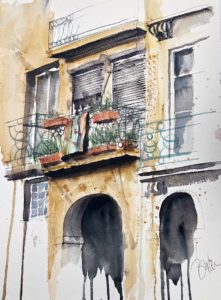
Result of the workshop…
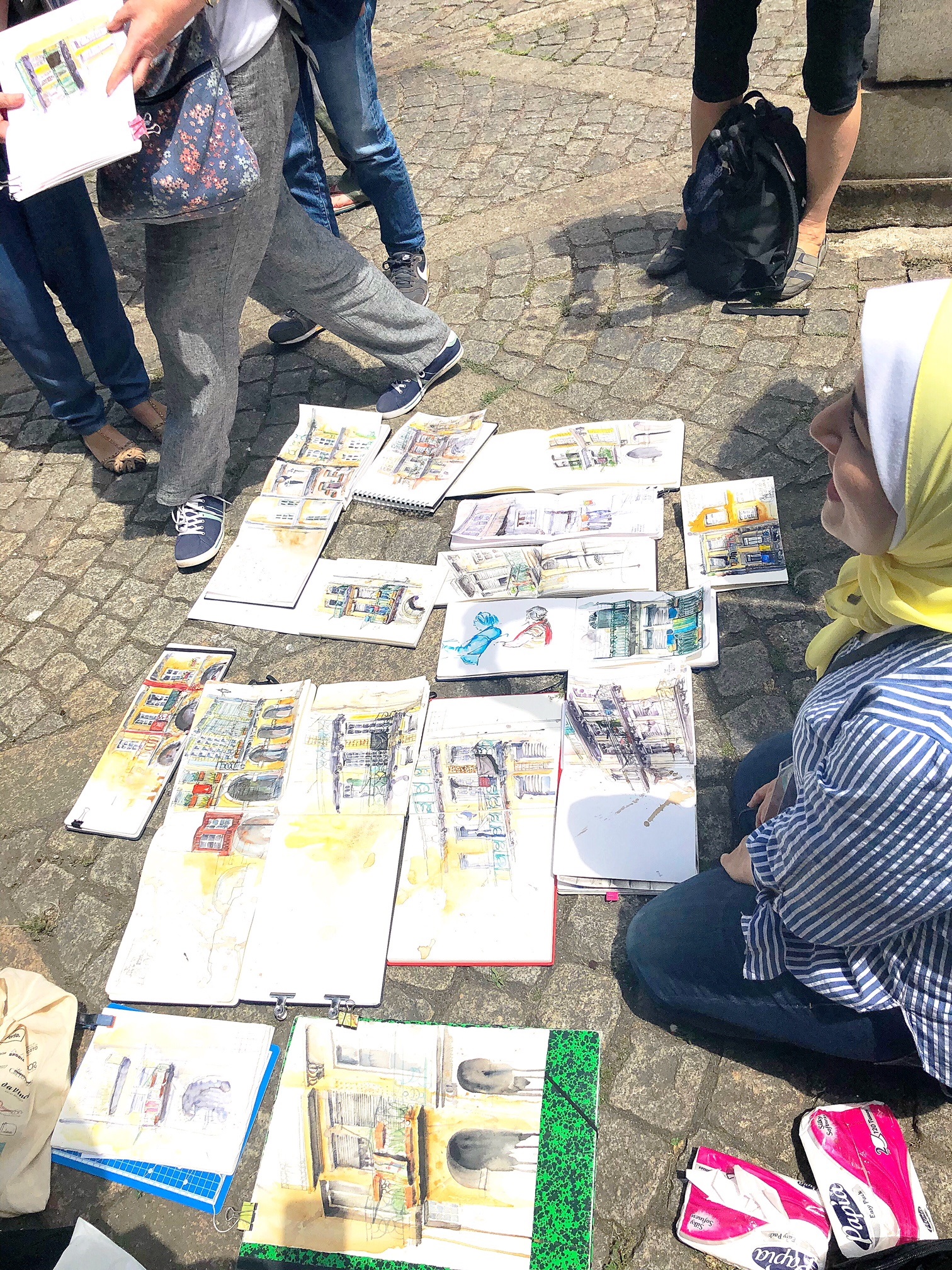
Sketching with dry twig and Chinese Ink by Barbara Luel
Ch’ng Kiah Kiean is a generous teacher. His specialty is sketching with dry twigs and Chinese ink. Here’s his website: https://kiahkiean.com/
First KK (Let’s call him KK, as it’s easier for Europeans to pronounce. He doesn’t mind 🙂 ) brought for all of us 10 participants our new drawing tools: we made our twigs and ink pots with gauze. We also had a hard brush and recipient with sponge and ink to make the shadowing.
Drawing with such unusual and new tools is the perfect creativity boost. The perfect way to get out of your comfort zone and train new drawing muscles and a whole new way of seeing and putting what you see to the paper. How do you look at the objects to draw? And how do you draw?
The most important change that happened to me was that I got rid of FEAR : fear of making a bad drawing, fear of judgment of others, fear of not being able to draw this or that, fear of missing out the important details, fear of making a fool of myself…
Let me share you some of his tips. First the tools: dry twigs. KK draws with Water Jasmine twigs, but really: you can pick out any twig and make a point to it to draw. I also tried bamboo twigs you can buy in art supply stores but those are quite hard. It’s better to take a twig of another tree. The point has to be long and fine. Then you put cotton gauze in a small bottle and pour ink on it. Take Chinese ink with resin. It’s water proof. The cotton gauze is needed so the point of the twig wouldn’t be dipped in liquid ink. It avoids dripping on the drawing paper. After the drawing of the lines KK uses a hard brush (like bristles to paint with oil) and a container with a dishwasher sponge with Chinese ink on it. The ink must feel 90% dry. You must be able to make dry brush strokes. After shadowing the drawing with ink we finish it with watercolor, so use nice watercolor paper: not too smooth, not to rough.
And most important: PLAY !
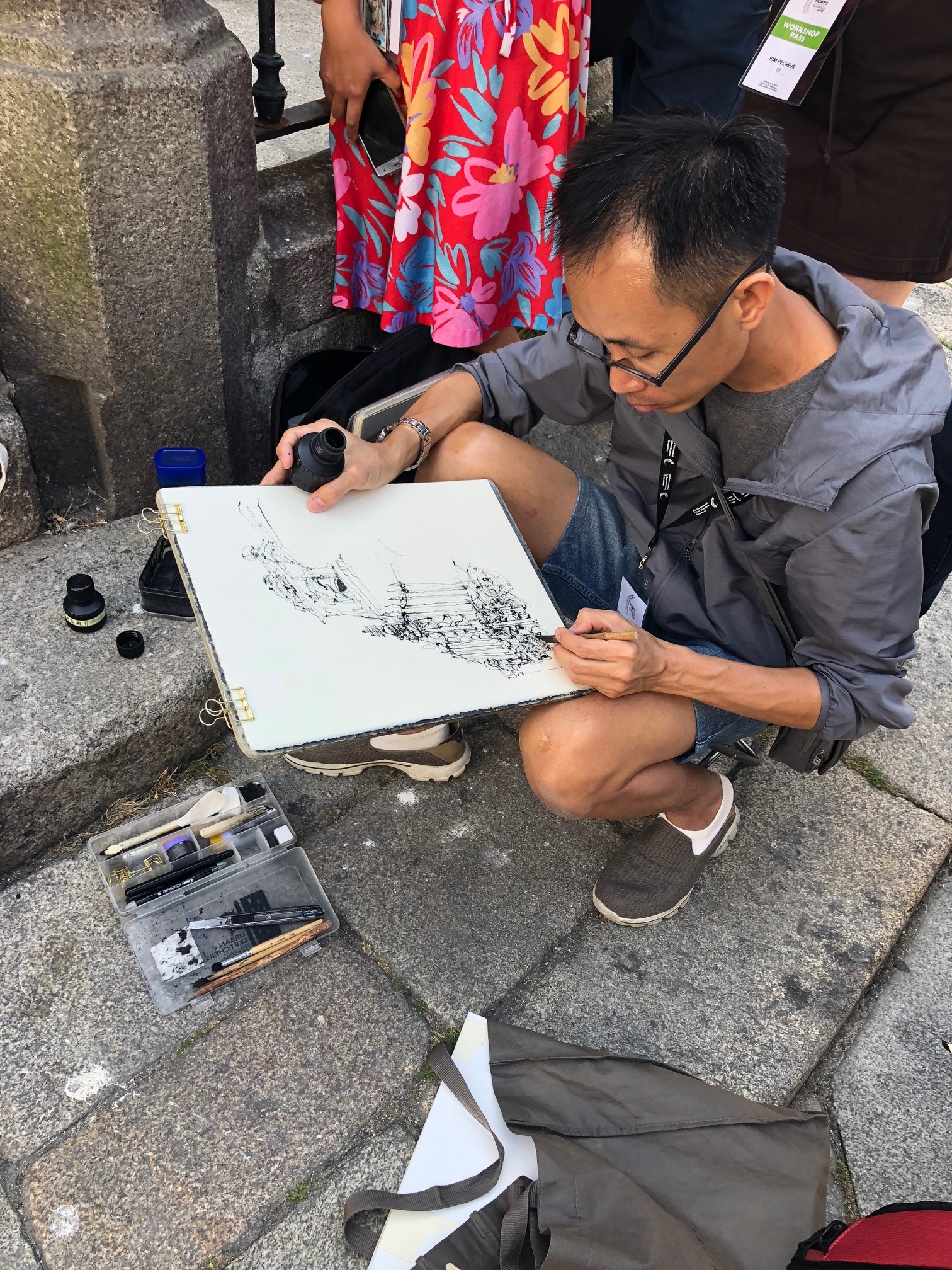

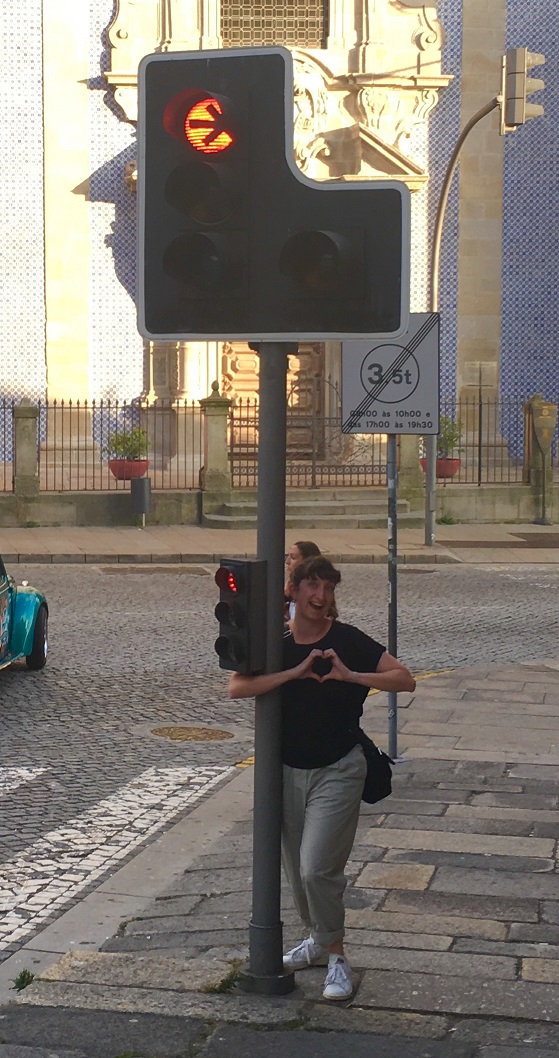
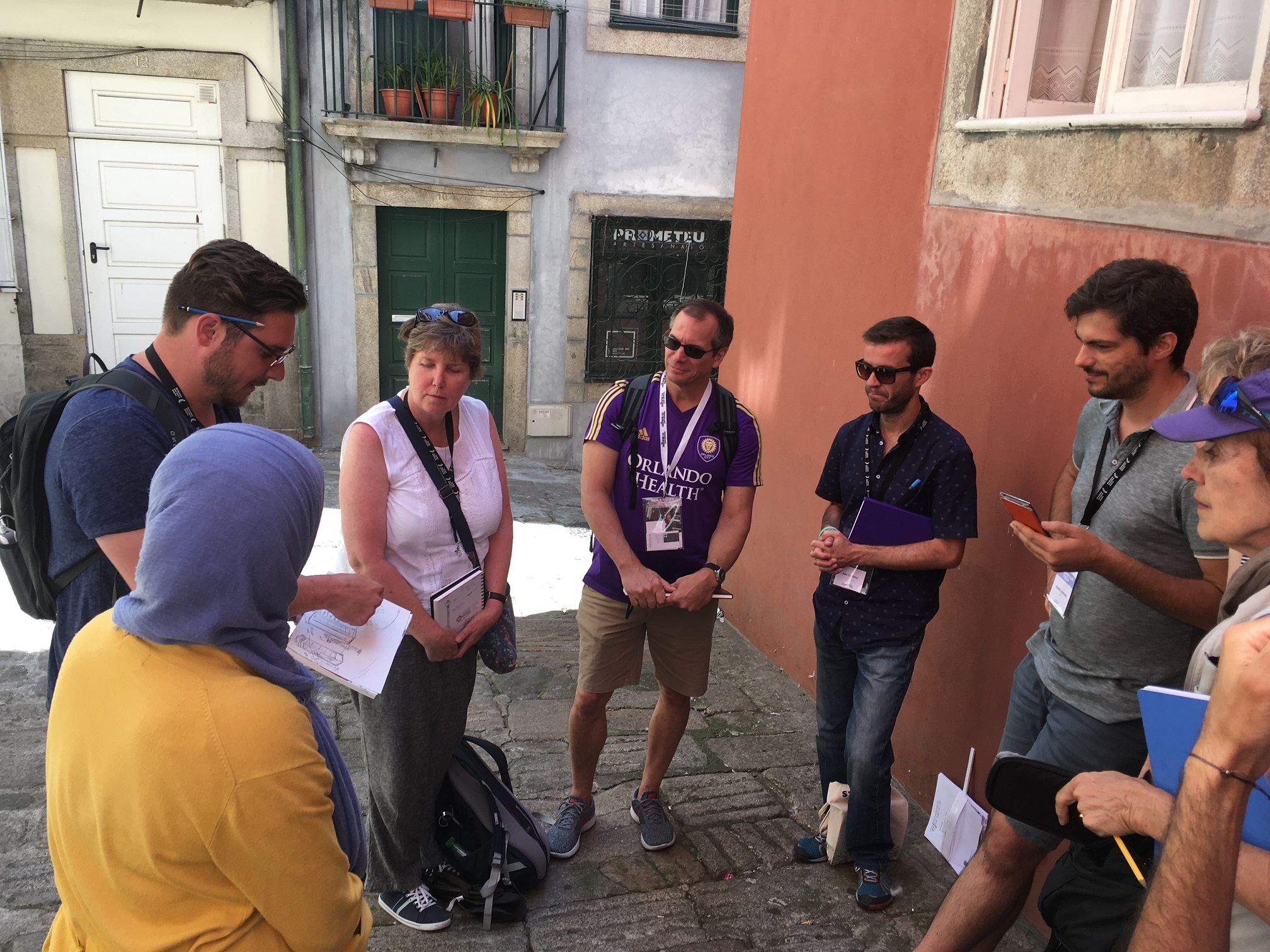
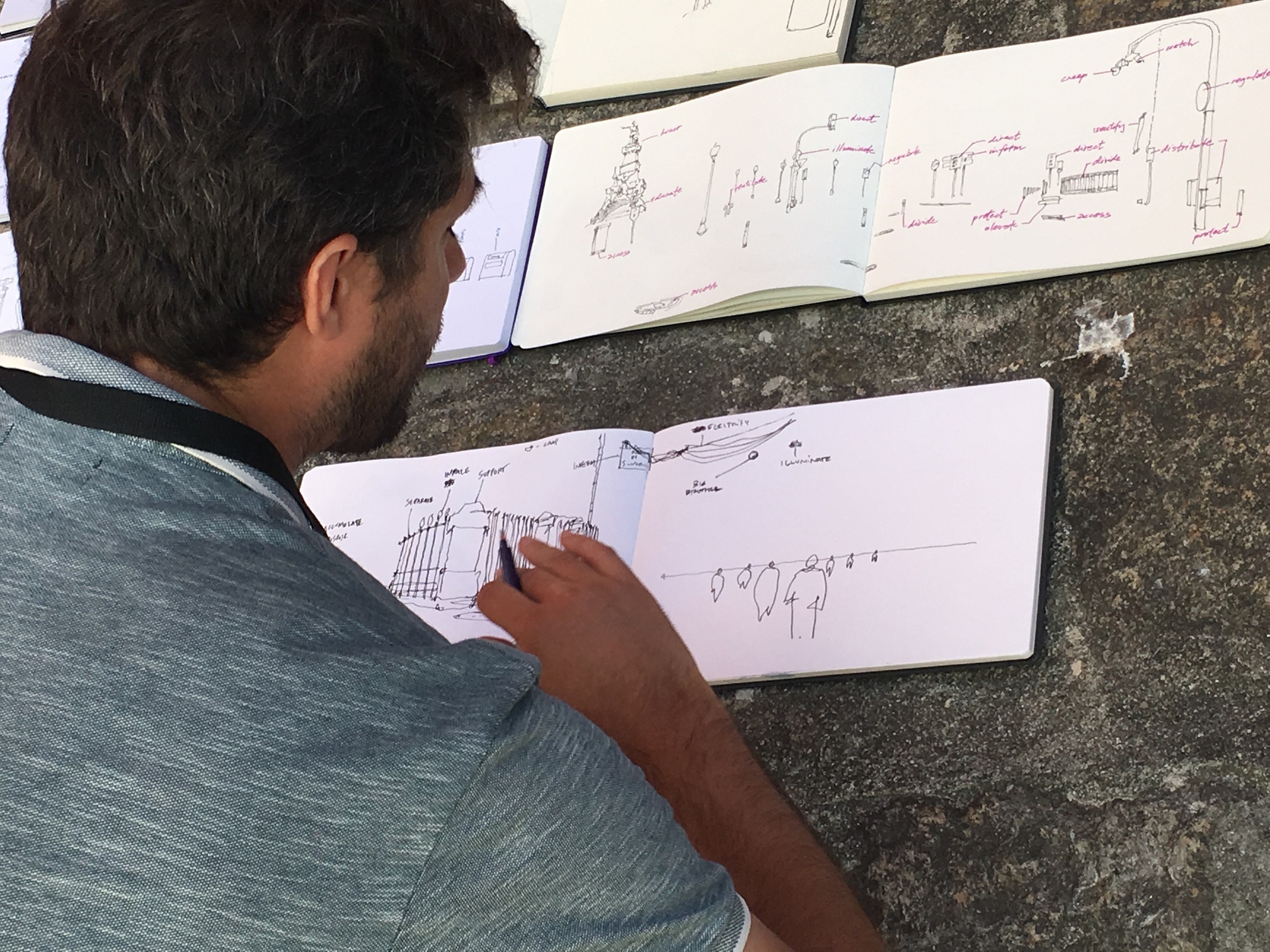
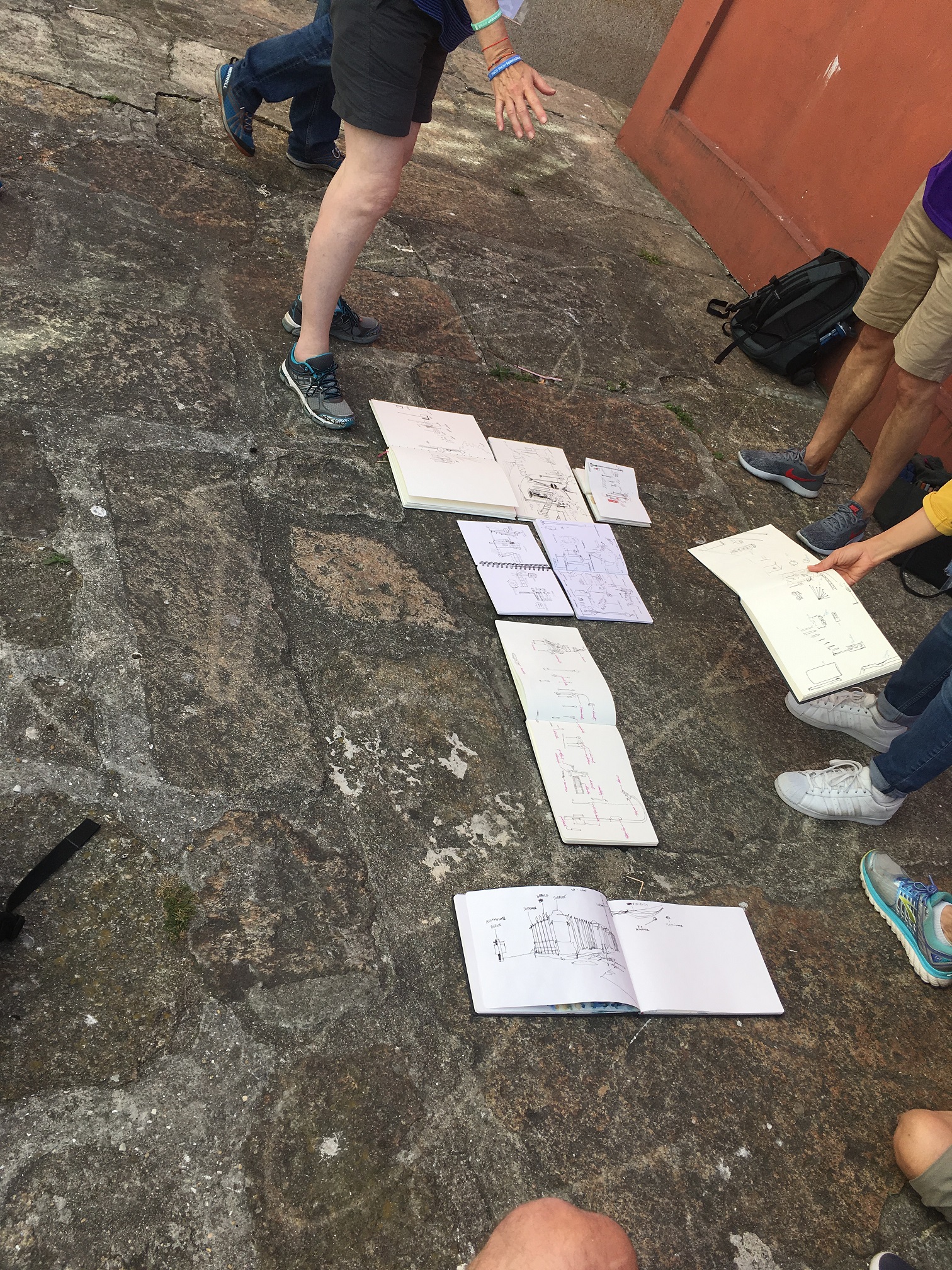
The soul and the anchor, by Sonia Vande Velde
Three hours to love a traffic light.
In the blue shadow of a red courtyard, set back from the bustle of the street, Pedro Loureiro tells us a sketcher story. The one in which the architectural illustrator who prefers to draw people finally discovers what was missing from his drawings.
A place crowded with people can be any place. To be unique, it needs what’s unique to it: public realm. Benches, traffic lights, garbage cans, traffic signs, street lights, and space anchors in reality.
Because a place crowded with people is only a meaningless space if people do not interact with the urban space. Each object thus tells its stories, the way it creates movements, actions, makes the city live. It’s animistic urban poetry and it’s touching.
Seeing is one thing. But drawing is a way of expression and storytelling is an important basis of Urban Sketching. It’s up to us to tell the stories of the places, through drawing, writing and speech. Here’s the workshop menu: “Stories of the Public Realm”.
First exercise: becoming aware of the presence of public objects, drawing them only, modelling space without architecture, without people, just public realm. Give them all a verb that defines their action, preferably funny and creative verbs. The questions fly: are trees part of this group? and shadows?… Not easy to express a place without evoking anything other than floating objects apparently without landmarks. We must play with proportions, abstract perspective, force ourselves to forget the years spent giving a support and background to everything we drew.
Second exercise: choose an object and study it intensively. What’s its material, how is it implemented, is it animated? What forms, what style, closely, from a distance, is it a serial object or a unique piece? Everyone then has 60 seconds to explain “their” topic. 60 seconds is the measure of an effective blogpost. Longer, you lose concentration, so you have to focus on the essential.
Third exercise: how do people interact with the object? Frequency, importance, utility. Should they consciously take it into account or does it disappear from their reality as long as they don’t use it…every interaction is scrutinized and documented. Here again, 60 second storytelling.
The “Wow-factor” of the workshop.
It’s a click. We finally give ourselves permission to draw something other than a postcard that says nothing. For a long time I had been annoying myself with clichés that were a bit vain. Since then, I have integrated more urban furniture into my compositions. The life of the red lights takes a new interest. At last, my sketches tell the story of the city.
To be completed…
You can also read more here: http://www.urbansketchers.org/p/usk-porto-2018.html

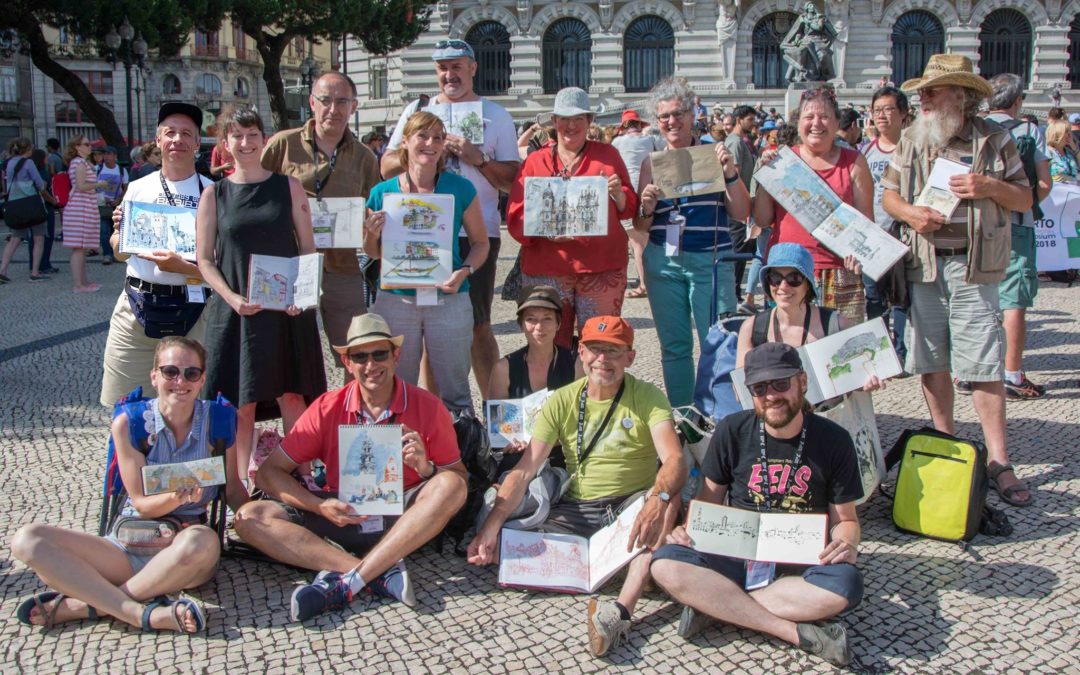
Recent Comments